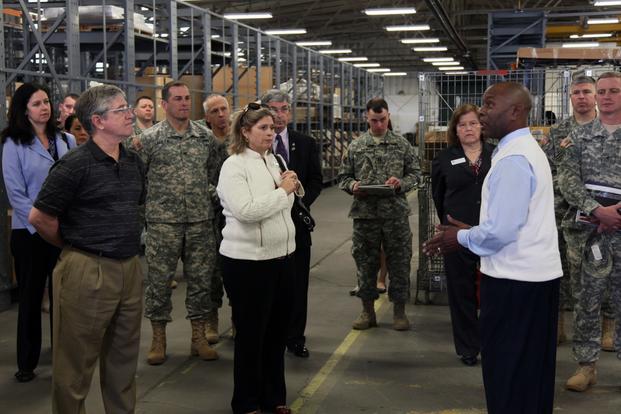The U.S. Army began preliminary talks with Congress on cutting the size of its civilian workforce in tandem with the continuing downsizing of the active duty ranks.
Army officials were meeting with staffers on Capitol Hill on Tuesday to discuss the process and methodology for the civilian cuts suggested by the military.
The initial statement from the service didn't say how many civilians would be cut or which bases would be most affected, but said the reductions would be in line with "military end-strength reductions to meet legislative mandates and ongoing budget constraints."
"Reductions at specific locations and the total number of (civilian) reductions required across the force are difficult to predict," the Army said, but the reductions will be in line with the service's projected reduction of active-duty strength to about 450,000 in 2019.
"Ongoing budget reductions and other legislative mandates require the Army to reduce the size of its total force, to include civilians and contractors," said Lt. Col. Joe Buccino, an Army spokesman. "As a result, Department of the Army civilian manpower is being reduced along with active duty military end-strength reductions announced in July 2015."
The service said it would try to meet civilian workforce reduction goals primarily through attrition and voluntary incentives, but warned that some mandatory cuts would be necessary.
With more than 1.3 million men and women on active duty, and 742,000 civilian personnel, the Defense Department is the nation's largest employer.
"The numbers are still coming down" across the services despite the budget deal reached last week between Congress and the White House that avoided a default over raising the debt limit and put off the next round of debate over federal spending and debt until 2017, said retired Army Col. Mike Barron, deputy director of government relations for the Military Officers Association of America.
"It wasn't something that cures all ills," he said of the budget deal. "It doesn't preclude the Army from drawing down" among the uniformed ranks and the civilian workforce, he said.
"Our concern is that it be done in the best way possible," Barron said. "We want to make sure that there's every incentive to help those folks in transition."
The budget agreement sets federal spending through the 2016 and 2017 fiscal years while easing caps on spending by providing an additional $80 billion, split evenly between military and domestic programs. However, the House and senate Appropriations Committees must write legislation to reflect the spending and they face a Dec. 11 deadline to finish the work.
The main challenge for the committees will come in offsetting a $5 billion net reduction in spending authority for defense in the budget deal as opposed to the previously approved defense bill. The leaders of the congressional defense committees on Tuesday released a list of programs identified for the reductions, including a $263 million cut to Army civilian full-time equilvant positions.
--Richard Sisk can be reached at Richard.Sisk@military.com.


























